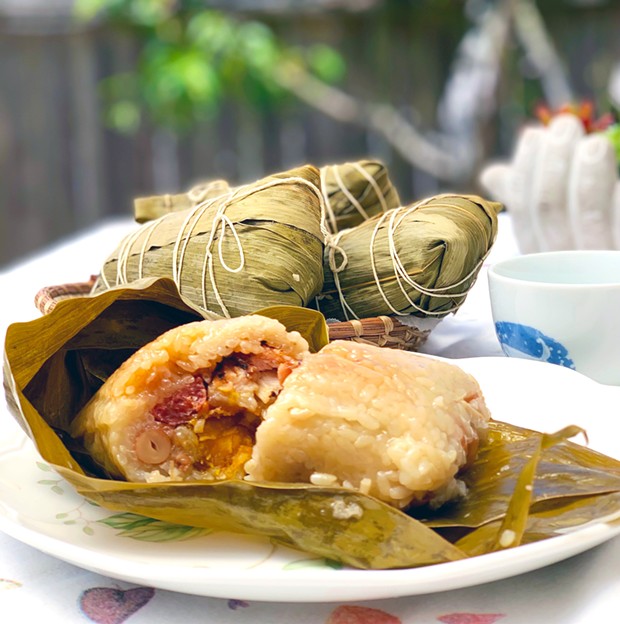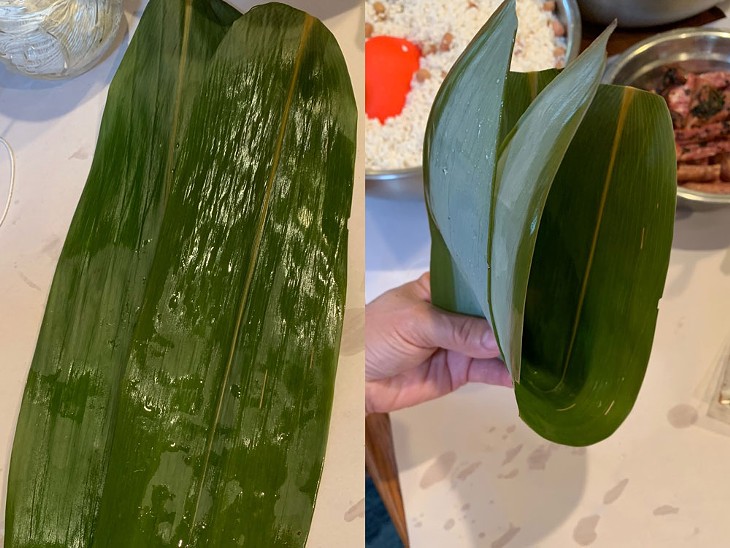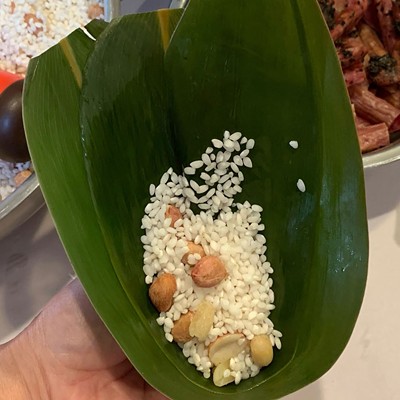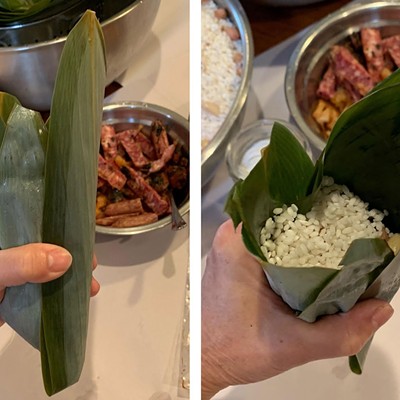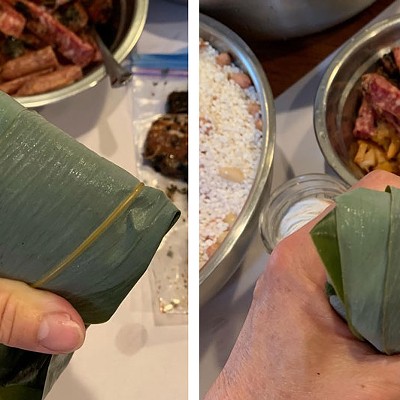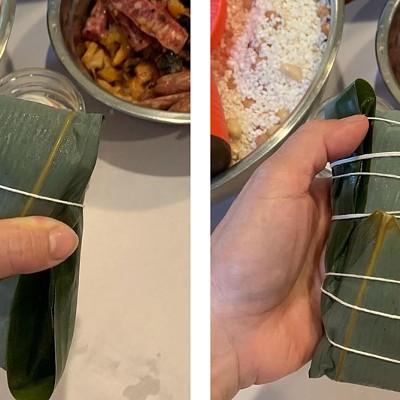[
{
"name": "Top Stories Video Pair",
"insertPoint": "7",
"component": "17087298",
"parentWrapperClass": "fdn-ads-inline-content-block",
"requiredCountToDisplay": "1"
}
]
Zongzi (sticky rice dumplings) are a classic treat to celebrate the Dragon Boat Festival for Chinese all over the world. This festival falls on the fifth day of the fifth lunar month and when I was growing up in China, I always looked forward to it. There was so much preparation for making the dumplings back then. First, the kids helped to separate the regular rice from glutinous rice. When we grew our rice, a small percentage of regular rice was mixed in with the glutinous rice, so we had to separate it out grain by grain. I had better eyesight back then. It sounds like a difficult job but we didn't have games to play and it was fun competing with my siblings.
Then my grandma and mom would prepare the bamboo leaves and the weed straws, marinate the pork belly, shell the peanuts and crack the salted duck eggs for yolks. Finally, they sat down in the kitchen with the door wide open — it was hot and humid in the south during June — and started making the dumplings. I was only allowed to watch them wrap but I wished I had persuaded them to let me try. The long hours of boiling them over the firebox stove filled the house with their aroma. l could hardly wait to take the first bite, sweet, savory, aromatic and comforting.
I learned how to make them after I came to the states. My mom showed me how to wrap them a few times. Mine never came out as neat as hers but I'm much faster. I have to say, sticky rice dumplings are the treat I'm most proud to make for family and friends. My mom even agreed my dumplings, with their own style and a little craziness, taste better than her old countryside version. I make them often since I can get the ingredients easily. For years, my boys liked to take them for school lunch and introduced them to their friends. That made me so happy.
I have always wanted to celebrate this tradition with others here, and this year the Dragon Boat Festival falls on June 14. I'm going to teach a class on making zongzi and sell some for a fundraiser for the Jefferson Community Center and the Boys & Girls Club of the Redwoods. Zongzi are labor intensive and time-consuming, but with a few of my Chinese friends' help and the support from the community, it'll be a success.
Country Zongzi
Makes about 12 dumplings. Dumplings can be refrigerated or frozen. For best results, reheat by boiling them for 15 minutes.
Ingredients:
40 or more dried bamboo leaves (3 leaves per dumplings, with extra in case of breakage)
A roll of good cotton twine
6 cups uncooked glutinous rice
1 cup raw skin-on peanuts
6 salted duck egg yolks (optional), whole or halved
1 pound pork belly, cut into 12 pieces
3 Chinese sausages, cut into 12 pieces
12 dried shrimp, soaked
2 shallots, sliced
Salt
Soy sauce
Dark soy sauce
Sugar
Rice wine (at least 40 percent ABV)
Vegetable oil
Chinese five-spice
1 inch fresh ginger, sliced
Start prepping the filling and leaves a day ahead.
First, marinate the pork belly with 1 teaspoon of salt, 2 teaspoons of soy sauce, 1 teaspoon of dark soy sauce, 2 teaspoons of rice wine, 3 slices of ginger and 1/3 teaspoon five spice. Cover and refrigerate overnight.
Second, soak the bamboo leaves in a large pot of hot water. Make sure all the leaves are submerged by placing a heavy object, like a plate or bowl, on the top of them. Leave them soaking overnight
Third, rinse the rice and peanuts together, drain the water and place them in a bowl. Add 2 teaspoons salt, 2 teaspoons rice wine, 1 teaspoon sugar and 1 teaspoon oil. Mix well and set aside overnight.
Fourth, sauté the shrimp and shallots with 1 teaspoon of oil for few minutes. Once cooled, cover and refrigerate them overnight.
Finally, toss the egg yolks with 1 tablespoon of rice wine and refrigerate.
The next day, drain the water from the leaves. Use a soft cloth to wipe each leaf and rinse them with warm water. Trim off 1/2 inch to square off both ends of the leaves. Discard any ripped leaves — that's why you always have few extra. Clear a workspace and set out the filling ingredients, twine and a pair of scissors, and get ready to wrap.
To assemble the zongzi:
This method starts by layering the bamboo to make a larger surface area, then folding it twice to form a sturdy cone. Then you'll fill the cone and seal the dumpling with folds on the remaining two sides to form a rectangular pillow to be tied up with twine. Go to www.northcoastjournal.com for step-by-step photos of the process.
To begin: Place 2 leaves side by side, shiny side up, overlapping about ½ inch. Pick them up together horizontally in your left hand. With your left hand under the leaves, pinch and fold them once in the middle. Turn the leaves so the folded edge is closest to you and the tips of the leaves are pointing away from you. Seal the right side by making a 3/4-inch fold lengthwise along the right edge. The leaves are now sealed by folds on two sides, forming a little pocket or cone.
Keeping a good hold on the pointed bottom of the cone with your left hand, use your right hand to put about 1/3 cup of the rice and peanut mixture in the pocket. Add 1 slice of pork belly, 1 piece of sausage, 1 dried shrimp with shallots and 1 whole or halved egg yolk (optional) in the center. Cover the filling with another 1/3 cup of the rice mixture. Pack the stuffing down gently.
With your left hand holding the cone upward, use your other hand to pick up a third leaf and place it alongside the top leaf, overlapping, to make the pocket's wall higher. With your right hand, fold the top 3/4 inch of the edge of the third leaf down, parallel to your second fold. This will seal a third side of your dumpling. Now the dumpling is only open on the top, where the ends of the leaves are pointing. Use your right hand to tightly fold the leaf ends downward to completely close the dumpling. Keep a firm hold over the last fold with your left hand so the dumpling stays together. Use your right hand to pull a length of twine. Hold one end of the string against the back of the dumpling with your left hand and use your right hand to wrap it around and around the dumpling several times. Make sure it's secured top to bottom before you cut out the twine and tie a knot. It should look like a pillow. Continue filling and wrapping the dumplings.
Once the dumplings are all tied up, put them in a large pot and fill it with warm water, make sure all the dumplings are submerged, leaving room to add more water later on. Bring the pot to a rapid boil for 30 minutes. Lower the heat to medium and continue to boil for another 2 ½ hours. The rice will absorb water during cooking, so check the pot periodically, adding hot water from a kettle as needed to keep the dumplings covered. If using an Instant Pot, it usually takes about 1 hour and 20 minutes.
Once they are cooked, carefully take the dumplings out and place them in a colander. l like to rinse with warm water to get rid of any grease. Enjoy them warm or room temperature.
You can find Home Cooking with Wendy Chan (she/her) classes benefitting local charities on Facebook, as well as tickets for the June 12 fundraiser ($20) benefitting the Jefferson Community Center and Boys & Girls Club of the Redwoods.
Speaking of...
-

Dumplings and Tea at the Carwash
Mar 31, 2023 -
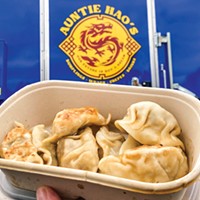
What's Good
Mar 30, 2023 -
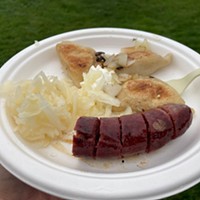
No Skinny Pierogi
Mar 2, 2023 - More »
Comments
Showing 1-1 of 1
